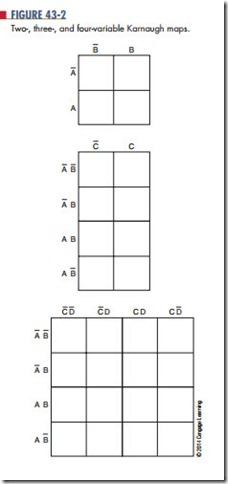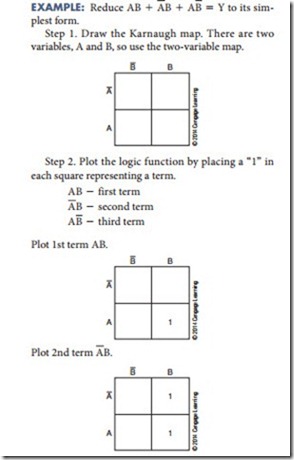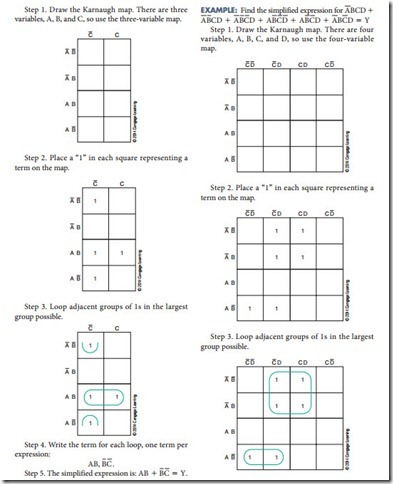Karnaugh maps
Another technique for reducing complex Boolean expressions is Karnaugh maps, which Maurice Karnaugh developed in 1953. His technique is similar to using Veitch diagrams. Figure 43-2 shows several Karnaugh maps. It can be cumbersome to solve problems with five or six variables with either Veitch diagrams or Karnaugh maps. Those types of problems are best solved by other techniques or computer software designed specifically for them.
To use a Karnaugh map, follow these steps:
1. Draw the diagram based on the number of variables. As Figure 43-2 shows, a two-variable map requires 22 5 4 squares, a three-variable map
requires 23 5 8 squares, and a four-variable map
requires 24 5 16 squares—the same requirements as a Veitch diagram.
2. Plot the logic functions by placing a “1” in each square representing a term.
3. Obtain the simplified logic function by looping adjacent groups of 1s in groups of eight, four,
or two. Continue to loop until all 1s are included.
4. “OR” the loops with one term per loop. (Each expression is pulled off the Karnaugh map and “OR”ed using the “1 ” symbol, for example,
5. Write the simplified expression.



